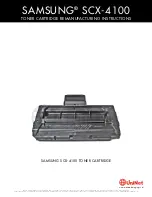
3-5
Chapter 3 Indoor Equipment Maintenance
Redline Communications Inc. Confidential and Proprietary
•
Expected minimum modulation scheme offered over the uplink (64QAM, 16QAM,
QPSK etc.).
•
RedMAX receive sensitivities per modulation scheme and channel size.
•
Designed cell radius.
•
Expected fading conditions within the cell.
•
The expected noise rise from other cells when the network is fully loaded with the
expected traffic.
•
Path condition for the wireless link between the sector controller and the subscriber
unit (e.g., LOS, OLOS, NLOS).
•
Frequency reuse factor in the network or distance to the closest cells where the
frequency is reused.
As an example, for a system with 3.5 MHz channel size and offering 64QAM, 3/4 in the
uplink, ideally the RSSI at the sector controller should be no less than -77 dBm, under no
external noise conditions and assuming a fading of 5 dBm, and expected noise rise of 2
dBm, the ideal requested RSSI should be:
-77dBm + 5 dBm + 2 dBm = -70 dBm.
For the same case, but offering 16 QAM, ½, with receive sensitivity at -89 dBm under no
external noise conditions and again assuming a fading of 5 dBm, and expected noise rise
of 2 dBm, the ideal requested RSSI should be:
-89 dBm+ 5 dBm + 2 dBm = -82 dBm.
In general, this parameter should be initially defined as part of the system design
recommendations. Incorrect configuration of the "Reference RSS" parameter may result in
less-than-optimum uplink performance or higher inter-system interference.
The higher the setting for Reference RSS, the higher the power levels that all of the
subscriber units in the sector will need to transmit and you may also see higher noise rise
in the neighboring cells. For this reason a reasonable Reference RSS according to the
frequency re-use factors and noise floor level should be selected, in order to satisfy the
expected service levels in the sectors while avoiding unnecessary power transmitted from
the subscriber units in the sector, and hence lowering the inter-system interference.
Step 1
Based on your channel size and modulation, determine the reference RSS value for each
sector controller.
Step 2
Record all of your results and file the written report with your other maintenance logs.
Sector Controller Synchronization with the GPS Clock
Sector controller synchronization must be used to coordinate RF transmissions when
operating two or more co-located sector controllers in order to minimize inter-sector RF
interference.
















































